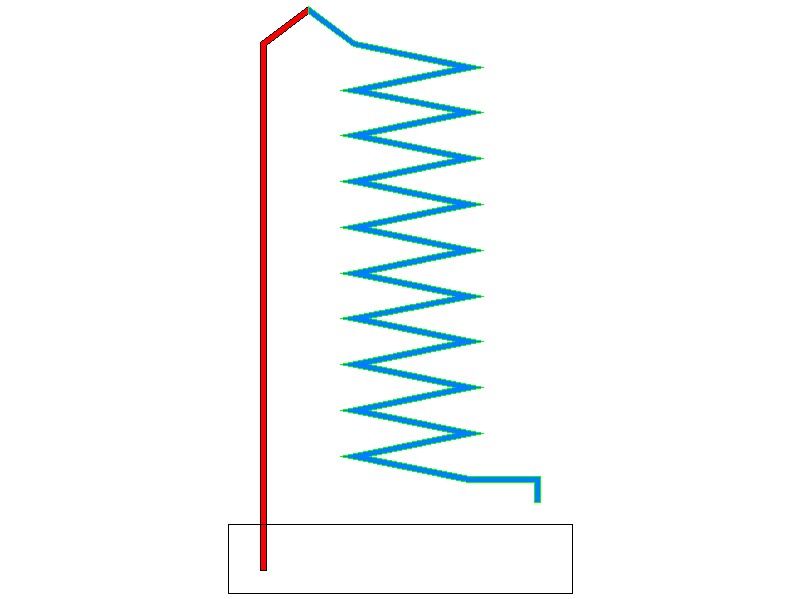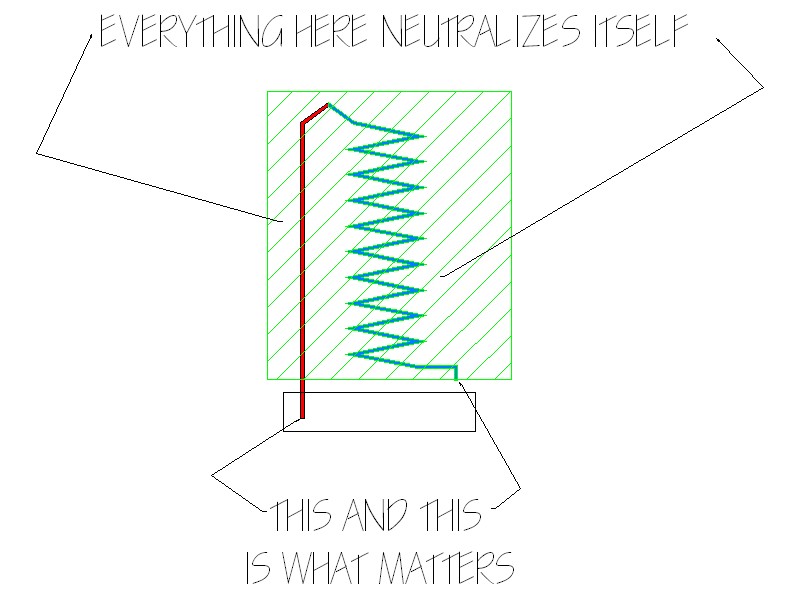After, but before the EMU. I had forgotten I had created the Ostrich.Originally Posted by SquirrelDip

+ Reply to Thread
Results 31 to 60 of 67
-

-
Kangaroo must have come after an all night drink-fest... The three-toed sloth was a dare wasn't it?Originally Posted by Doramius
-
Actually the Kangaroo was a dare to make a 2 legged animal, where the legs can't move independently. The 3 toed sloth wasn't made with much intelligence, so I didn't want to overwhelm it with counting. :P The all-night drink fest was when I came up with the flamingo. I mean what the hell was I thinking. Lets see you try balancing on a single pipe-cleaner while sleeping. As for it's color.....I was totally wasted. :/Originally Posted by SquirrelDip

Going back to water, does anyone else wonder why we aren't using hydrogen-gasoline or plain hydrogen fueled combustion cars? Especially when we have technology to make it extremely cheap & durable. Just a small side thought in this massive thread-jack.
-
Doramius wrote
I think that in this earlier example of a siphon or suction hose even though the hose and the water in it may travel uphill part of the time the final resting place of the water on the draining side must be lower than the originating water source otherwise it will backwash and air will get in the system and stop flowing. If both ends are immersed then it will reverse flow towards the lower side. There may have been an optical illusion as to the exact height of the 2 ends of the hose.True, my method is siphoning. But it is still a movement of water uphill due to the stronger downward pressure.
Real self acting pumps which move liquid uphill use a moving flow of some type. The principle is lots of water in and only a small amount gets pushed up by the pressure. The unlifted liquid is what pushes and it is considered waste. -
I think you missed parts of the example. The water pressure outwards was heavier and faster than air could make it in. We wondered about that and thought about putting a ubend for a sink to stop air from going back, but it never happened. The valve at the end in the pool worked well enough to prevent backflow.Originally Posted by gll99
I made a rough example. The road is definitely not lower than the pool. The pool is inground and is 9 1/2' deep. again, it's the downward pressure that causes the water to rise. There is more water in the 120' hose coil flowing downward than in the 16' rise. the weight of the water down the coil creates a vaccum in the rise. As long as the end in the pool stays immersed in water the vaccum will be maintained. The valve at the end of the rise in the pool would block a possible backflow.


-
Sorry Doramius but I still think it was an optical illusion with the height of the water. I don't have a model but tried to analyse what would happen.
In your example because of the height from the coil top to the pool inlet is higher, gravity actually pulls the water more here than from the coil top to the hose outlet which is at a gentler incline. The hose would empty from both ends. Even if a valve stopped it from emptying back into the pool then it would still empty at the other end but with insufficient momentum to pull any pool water with it. The outlet stream would weaken, flatten with gravity and let air into the hose cutting of the flow. With the back valve closed you would end up with a column of water sitting between the pool inlet and the top of the coiled hose.
All the water is doing is seeking it's equilibrium (level)
If the method you describe worked then there would be no need for aquarium or fountain pumps just adjust the amount of hose length which is immersed between the inlet and the outlet. Water wheels would run without a running stream or river. You would have found a source of unlimited free hydro electric and mechanical energy because you could return the water back to it's source after it accomplished the task.
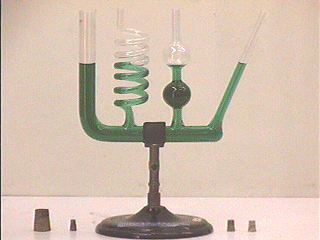
Imagine puncturing a small hole in the right arm about 1/3 into the liquid. The water would flow out of the other parts until the new level was established but not lower than that. -
yea something is amiss here in this diagram

if the water was made to run back int the pool (possible in your diagram) ..
the water would flow forever and well -- i dont see that happening ..."Each problem that I solved became a rule which served afterwards to solve other problems." - Rene Descartes (1596-1650) -
not the best but it's got a little video of it. You can actually see the water going down on the right but maybe it's different when you see it all liveOriginally Posted by BJ_M

http://www.dyson.co.uk/chelsea/default.asp?sinavtype=menu -
I think that I know that it souldn't work. But it does have an air of intrique to it. It would seem that the gravity pulling on the water in 200' of hose at a gentle slope could actually form enough vacume to pull water out of the pool for a much shorter lift.
It is akin to perpetual motion it seems and shouldn't happen, but I ain't calling BS until I get this figured out or tried.
Added as an edit:
Nope it shouldn't work in a natural state, but I might suggest that if the flow was started with outside energy, maybe the 200' of hose would act like a flywheel and help keep the momentun of the flow going or something. That is to say that the initial energy applied was actually enough to empty the pool and the hose coil is like an energy storage/release devise?
Man I got to test this one out some timeIS IT SUPPOSED TO SMOKE LIKE THAT? -
IS IT SUPPOSED TO SMOKE LIKE THAT?
-
Still speaking of the 200' hose example:
I think upon further thought that I would revise one point.
If the system was left open meaning no closed valve on the inlet hose at the pool end then the water in the hose would all flow back into the pool as soon as you removed the stopper from the outlet end. In a column of liquid where no air is present it will always flow to the lower side. Pockets of air change the rules because you can have pockets of trapped water in uneven looped areas.
Note that it is the height of the surface of the water compared to the height of the oulet target that matters here not the bottom of the pool. The fact that the hose goes to the bottom is immaterial at the start because any part below the waterline will be filled with water. So the point you are draining to only has to be lower than a point just below the surface of the pool. This of course changes as the water level goes down in the pool.
If the system was closed at either end then no water flow would take place at all. Similar to sticking a straw in liquid and placing your finger over the top hole and then extracting it from the liquid. It stays in the straw.
------------------------------------------------------------------
The cascading water looks great but it is an illusion. The article says that water is recycled underneath the structure while air bubbles are pushed up the ramp on a thin surface of water going down the ramp and this creates the illusion of water going uphill -
Air pressure. In the same way you can turn a full glass of water upside down in a pool and then raise it so the glass of water is above the pool level.But I know that something is missing?
-
"Defy" gravity? no. Nothing "defies" gravity. Unless you consider "nothing" something, then there is never nothing and always something, but it is said that a vaccum is nothingness, but since nothing is something, I don't think we can trust science. Science = Devil's magic.
As (questionably, in some cases) edumikated peoples, moving water uphill without the use of any mechanical pump has sparked a great debate, and in true OT form some fragmented side arguement musings have occured...
Siphoning...here is a little experiment for you...try siphoning water out of any resevior, get the water flowing and then move the hose (slowly) so that the exact middle of the hose is at the vertex of the height. Keep a check on the force of the water as you move the hose. You will notice the water pressure diminish and as you approach the vertex with the mid-point of the hose. To siphon, it is necessary to have more hose outside the resevior than inside, and it does not matter how steeply the hose outside the resevior is placed, you can hang it straight down if you like, you will still need more water in the hose on the "downhill side" of the resevior than on the "uphill side".
It is also a misnomer that the exit end of the hose must lie below the intake end of the hose, this is not true. If the hose is long enough, the end of the hose nor any part of the hose, needs to be below the entrance end of the hose. -
YOU CAN, litterally have a perpetual flow of water, just build it and you'll see. The key is, YOU MUST have more weight of outflowing water, than you are picking up. It's simple pressure factor. An aquarium is totally different. Those pumps have filters and other crap, plus you need another couple of gallons to have the water run in a method similar to my setup. You can put a filter in a small area. to use the hose method, you are going to take up a lot more space. I used a diagram from ZAPPER and revised it a bit, and it does work. You just have to fill it slowly, from the drainage side, and make sure there is no air. the intake side you hold in the air until all the air is released out and water is continually flowing out. put your valve on to prevent potential backflow, and immediately submerse the intake end in the water. as long as the intake end stays in the water, it will continue to suck water out, do to the weight of the water flowing down, is stronger than flowing up. We thought we might need a u-bend for the very fact you're stating, but we lucked out and more water pressure came out in flow, than there was enough pressure for air to come in. But for the sake of the diagram, I included the U-bend. The important thing is you need more water weight flowing downhill, than uphill, inside the vaccum of the hose.
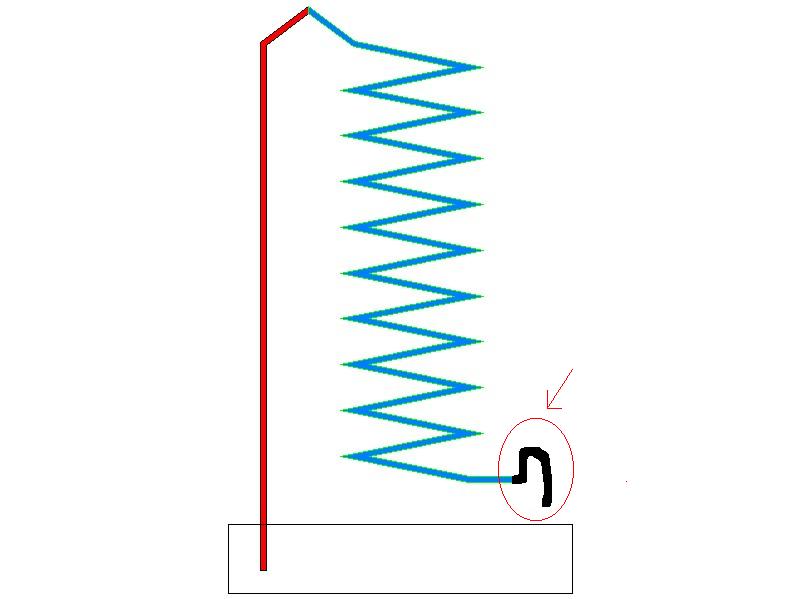

-
Sorry northcat, Doramius, (Zapper)
I wish what you said was true,
What you describe would sure be nice. It would solve all the energy problems.
The hose no matter how long must end even slightly below the point of origin in a syphon for it to work.
Simple fact is water will seek it's level. Once you open the valves in your model the water would run backwards to the direction you expect in your model.
My addon is crude but here is what you could do if your model worked. Add a water wheel and a drive chain connected to a motor or a generator. You have instant backyard power.
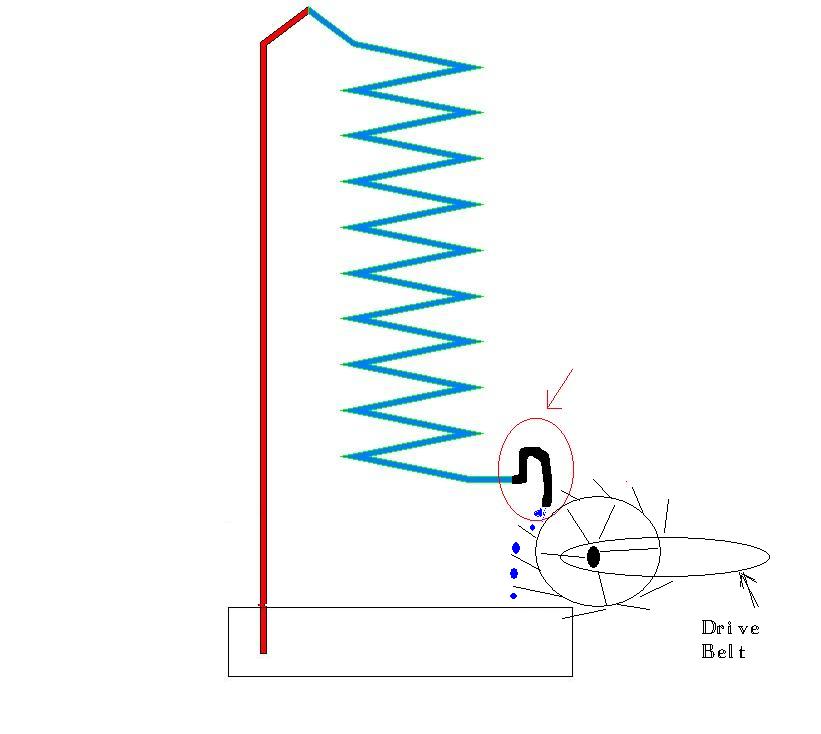
Ram pumps are less than 10 to 20% efficient. What you draw is 100% efficient. If you can make this work please pm me don't post it here we will go in business and make billions
-
I was trying to find an easy way to explain my points accurately. I think this might help.
Here's a simple science site that explains why a syphon has to drain lower than the source and that the lower it is the faster the water will flow.
http://www.science-projects.com/WaterCoaster.htm
It's called watercoaster1 there is also a second page which shows how hard it is to start a syphon that rises high up before dropping back down.
This site also has a good explanation of syphons and at the bottom of the page "The Pressure Explanation of a Syphon"
http://www.exo.net/~pauld/physics/syphon/syphonphysics.htm
There was also a variety of info elsewhere as I browsed various sites that show that air pressure on a water column is around 15 psi I guess at sea level which means that you probably couldn't syphon water over a 32+ foot wall and back down the other side without mechanical assistance because there wouldn't be enough air pressure to push it past this point
btw) This is a very interesting discussion and does make you want to experiment. -
@gll99
It looks good on paper though doesn't it?
I do want to tinker with this sometime when I can find time and materials.
I wonder if with backflow preventers, or even not, if enough vacume would occure to lower the boiling point of the liquid and induce a gas bubble? I mean that I am pretty sure that you can only vacume water so high before the column breaks apart right? (I am going back a looonng way on my memory for this)IS IT SUPPOSED TO SMOKE LIKE THAT? -
@ZAPPER
Yeah! Even though I know it doesn't work, it looks like it would work but if I had the time to play with it, just out of curiousity, I would reverse the trap at the end so it's more like an under the sink water trap.

Just remember if you want to stick with the spirit of the exercise whatever it is can't use external power.
Even ram pumps use a moving water source to push water uphill. At first I was exited reading about those things, although there are many variations of the model, it seems that there is not much room for improvement of that process.
That long hose idea had me second guessing myself but I knew there had to be a hole in the logic because it defied some basic laws of physics.
There are people who have made closed box perpetual motion machines but experts say that no credible witnesses were ever allowed to see the inside because of so called patent pending claims which never materialised.
Google "Perpetual motion". There's some interesting reading when you have some time. -
IS IT SUPPOSED TO SMOKE LIKE THAT?
-
I simulated this with bent drinking straws a few minutes ago but without all the bends in the diagram. It still respects the principle of short section versus long section.
I filled a deep bowl with water and filled the long straw with water.
First I tried just holding my finger on the short end of the straw completely full of water and with the tip covered held it vertical with the other end open and the water didn't run out as long as I kept my finger on the top end.
I then immersed the bent tip in the bowl. The other end was sticking far out of the bowl but above the water line. The water did not flow in either direction again as I expected. I removed my finger from the straw while the tip was well under water and even though the straw went up to clear the edge of the bowl and then back down a bit and I kept the other end slightly higher than the water level, the water in the straw ran backwards and down into the bowl until the water in the straw was level with the water in the bowl.
Finally I immersed the straw full of water while holding the bent tip and let the other end out of the bowl hanging out but below the level of the water in the bowl. As soon as I took my finger off the tip in the bowl the water started to syphon out of the bowl. The lower I pushed the long end of the straw below the bowl level the harder the water flowed out. This is also what I expected to see.
I think the rest of the diagram with traps and valves has no real bearing on the results. A reverse valve at the inlet would at some point have to open to let water in from the pool but since it is the same tube and the pressure is in fact reversed water would actually flow the other way into the pool. -
gll99, what you're saying is water defies gravity and that's simply not true. Water will seek the lowest point when exposed to proper pressure. If I put an air valve at the top of the device, all pressure inside the tube is lost. The heavier weight of the water on the outflowing side will follow the law of gravity. Think of a lever balance system, the heavier weight follows gravity. Lets also look at a doctors syringe. You put the needle in the liquid. You have a stronger force pulling the plunger and the vaccum inside will force the liquid through. By creating a stronger weight of downward force inside the coil of the hose, you suck up the lighter weight in the intake side of the hose. There is no way for the pressure to equalize without air. Air pressure inside the hose does not exist. You could put a motor at the end and supply and endless amount of energy. You have 2 problems. Water evaporates & The water pressure coming out would not have enough weight or strength to turn a powerful turbine. You might only be able to power your flashlight. A turbine that could generate large amounts of power would require a large amount of force. Again, this contraption takes up A LOT OF SPACE.
I've already built this, and it works. To say it does not work means Water truly does defy gravity. So the outcome result of this contraption would give LORDSMURF his answer.

-
Guest34343Guest
It's all very silly. If the coiled hose thing worked, it would be taking water at the pool inlet and depositing it at a higher point. That would be creating extra gravitational potential energy with no energy input to the system. Any physicist can tell you it ain't gonna happen.
If you want to pursue your weights argument, don't forget that the weight in the coils acts mostly against the bottom of each coil turn with only a small component in the direction of water flow. -
No. That is what you are saying.gll99, what you're saying is water defies gravity
I am stating exactly the opposite. Gravity is pulling on the 16' side more than that twisted zigzag side. Forget the length it's the height that comes into play. The higher the source side is the greater the vacuum is needed to pull the water up. It doesn't matter that you have coiled 180' of hose on the other side if the lowest point of the target when compared to the input water source
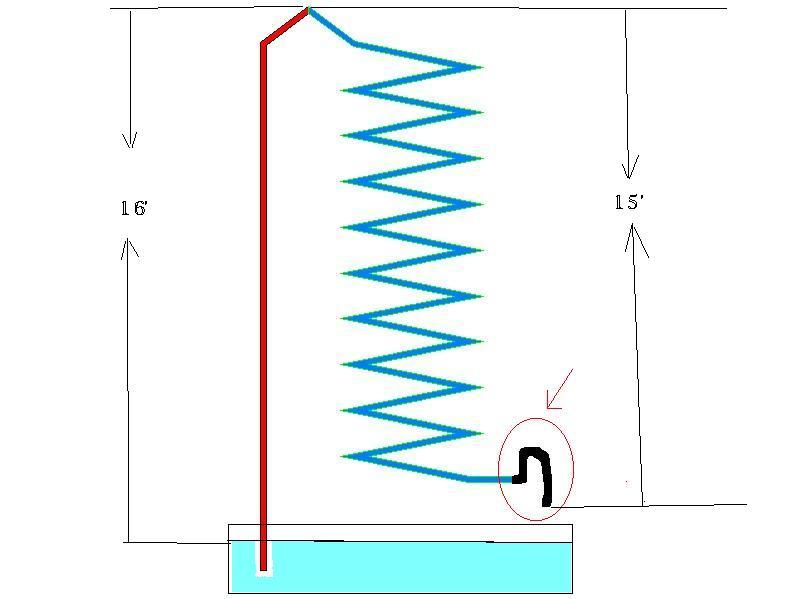
Levels are difficult to gauge by eye. I know most lots are elevated from the roadway even if they appear close otherwise the lot would flood. There is also the fact that roadways are crested in the middle and drop quite a bit towards the sidewalk this can be very deceiving to the naked eye.
Believe me I wish you were right. Your device would do free work and be close to 100% efficient
-
Accelerate water in a spiralling toroidal shape, and it will levitate! (Mercury works better).
-
'Originally Posted by mattso
Can you do that without using energy to maintain it?
Fludd's perpetual machine is a good example using an Achimedean screw and a waterwheel.
At first glance it looks like it would work and even be able to mill some grain for free. but it can't possibly work
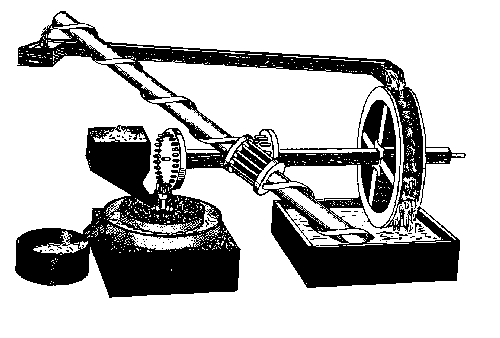
-
You got some major problems with that perpetual machine, and that's friction. Friction and gravity are major problems of perpetual machines. the force at which to turn wheels is enormous when trying to do work. Work is friction. I remember pedaling a bicycle for about 5 min, REAL fast to get a 150W bulb to look bright. Generally you can't defy Newtons law of "what's in motion stays in motion unless acted upon, by another force" Friction & gravity are both forces that barricade a perpetual machine to do work. however, for the machine above to work, very minimal energy would be needed to keep it going. Kind of like starting or speeding up a car and using a lot of gas. When you maintain a speed, you use a lot less gas. If the car defied gravity and ran off a road into the vaccum of outer-space, it would never stop even if you shut the engine off.
I also have never seen a road descend from the crest 7-9 feet. My car would be drving at like a 20-30 degree angle. Glad I had my truck with a V8 then. :P
This is just an experiment we'll have to try on our own. I will say, water (or liquids in general) & even fire look pretty dang cool in 0-gravity. I was looking at video of some experiments they were doing in the space shuttle. they lit a floating flamable liquid bubble (contained) and the fire just looked way too cool. Though still the color of fire, it moved and looked similar to the way a plasma screen loks when you apply pressure to the screen at points. Just too cool.
-
You are right! That's exactly the problem and it's actually worse than it looks. Even if you remove the grinding mill, maybe the worse offender and the working part of this mechanism there is still a considerable loss of energy in trying to lift the water above the wheel.You got some major problems with that perpetual machine, and that's friction. Friction and gravity are major problems of perpetual machines. the force at which to turn wheels is enormous when trying to do work. Work is friction.
I also have never seen a road descend from the crest 7-9 feet. My car would be drving at like a 20-30 degree angle. Glad I had my truck with a V8 then. I just pictured that. The crest would only be about a foot at most it's the property that could be higher but remember you are really pushing the water from the top of the pool not the bottom. There is no work needed to push the water below the water line up to the surface. Take a clear open ended tube and push it into a bowl of water and the water inside the tube rises to the same level as the water outside as the air gets pushed out by the equalising pressure. Getting it higher than that is where the work starts.
I just pictured that. The crest would only be about a foot at most it's the property that could be higher but remember you are really pushing the water from the top of the pool not the bottom. There is no work needed to push the water below the water line up to the surface. Take a clear open ended tube and push it into a bowl of water and the water inside the tube rises to the same level as the water outside as the air gets pushed out by the equalising pressure. Getting it higher than that is where the work starts.
I understand that eventually as the pool empties the surface gets lower but for the first 3 feet so it would work because the land is usually higher than the street by that much.
My old house had a minimum rise of 6 feet to the side yard and we still had a concrete walkway with steps to the front of the house and it was a bit higher in back where the pool was. My current house has the garage in front and the gentle slope is at least 2 to 3 feet from the garage door to the street and the backyard is still a bit higher.
That's for sure. Near 0 gravity changes many things. Many experiments can be done on the space station that scientists just couldn't duplicate on earth.I will say, water (or liquids in general) & even fire look pretty dang cool in 0-gravity
Back to your original situation:

The way you drew it the top of the water is slightly above the outlet end of the hose so at least to start this would work.
As the water in the pool went down there would need to be a force applied to maintain the suction (vacuum) or a push to increase air pressure from the inlet end. Without this the flow would stop. Lowering the oulet hose below the inlet level (technically just below the water source's surface because the water could enter below that) will do this by lowering the air pressure at the outlet end. Another way is to apply suction at the outlet via a pump or a push using the pool's filter pump.
I don't want to belabor the point and I believe that you emptied the pool as you say but there has to be a missing piece of the puzzle in your example.
Have you ever heard of magnetic hills
http://math.ucr.edu/home/baez/physics/General/roll-uphill.html -
http://www.rexresearch.com/minato/minato.htm
Close to free energy!?
Use this to toroidally-spiral your mercury!

-
I'm pretty sure it is directly related to why mirrors reverse left and right, but not up and down.

-
Originally Posted by Legendsk
Oh great! Now I'll be up another week trying to figure this one out!
 IS IT SUPPOSED TO SMOKE LIKE THAT?
IS IT SUPPOSED TO SMOKE LIKE THAT?
Similar Threads
-
Water damaged tapes
By NightFire in forum RestorationReplies: 2Last Post: 23rd Jan 2011, 00:58 -
Are water-shield discs necessary?
By SilverBlade in forum MediaReplies: 24Last Post: 24th Feb 2009, 22:40 -
Man defies gravity...
By zoobie in forum Off topicReplies: 7Last Post: 8th Dec 2008, 22:22 -
Water for Gas?
By MeDiCo_BrUjO in forum Off topicReplies: 2Last Post: 17th Jul 2008, 17:10



![Computer details: Windows Server 2012 R2
(2x) 2.93 GHz Hex-Core Intel Xeon X5670
Toshiba OCZ RD400 NVMe PCI-Express 1TB card
(2x) onboard Crucial MX200 512GB SSD
60TB+ NAS storage [mixed amongst Synology 1515+ & 1815+]
144GB Registered DDR3
Plex Media Server Comp](/images/buttons/computer.gif)
 Quote
Quote
